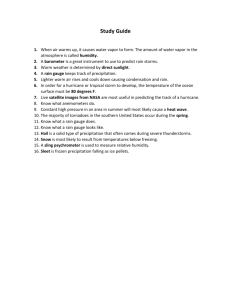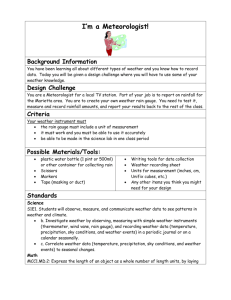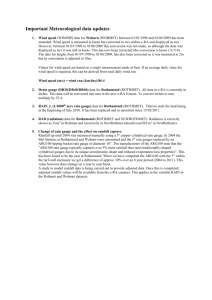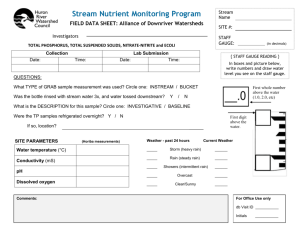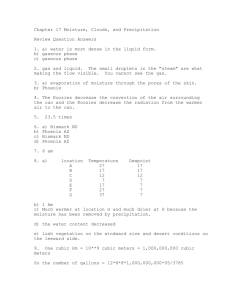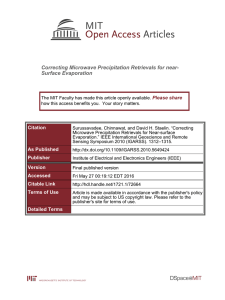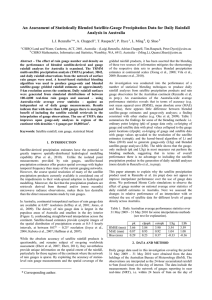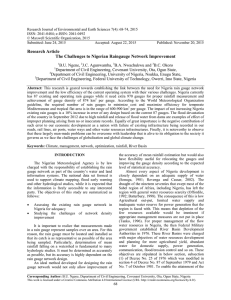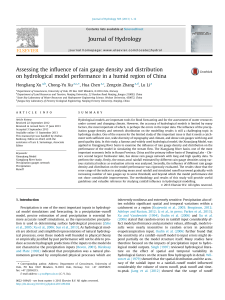Document 11277531
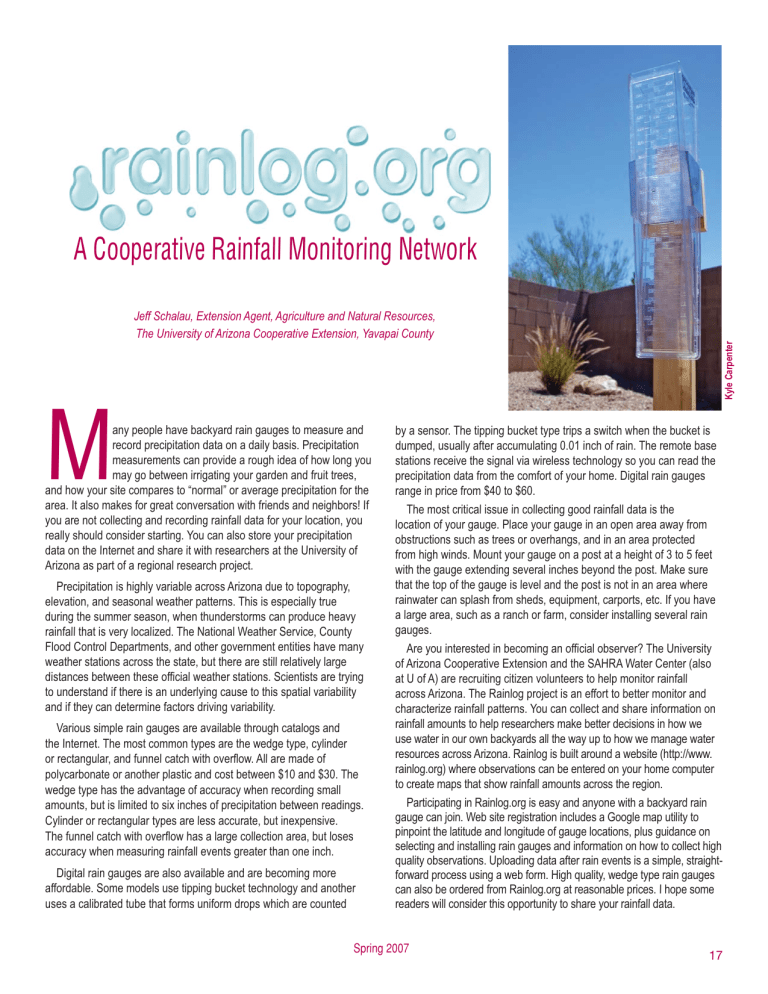
Ê«iÀ>ÌÛiÊ,>v>ÊÌÀ}Ê iÌÜÀ
Jeff Schalau, Extension Agent, Agriculture and Natural Resources,
The University of Arizona Cooperative Extension, Yavapai County
M any people have backyard rain gauges to measure and record precipitation data on a daily basis. Precipitation measurements can provide a rough idea of how long you may go between irrigating your garden and fruit trees, and how your site compares to “normal” or average precipitation for the area. It also makes for great conversation with friends and neighbors! If you are not collecting and recording rainfall data for your location, you really should consider starting. You can also store your precipitation data on the Internet and share it with researchers at the University of
Arizona as part of a regional research project.
Precipitation is highly variable across Arizona due to topography, elevation, and seasonal weather patterns. This is especially true during the summer season, when thunderstorms can produce heavy rainfall that is very localized. The National Weather Service, County
Flood Control Departments, and other government entities have many weather stations across the state, but there are still relatively large distances between these official weather stations. Scientists are trying to understand if there is an underlying cause to this spatial variability and if they can determine factors driving variability.
Various simple rain gauges are available through catalogs and the Internet. The most common types are the wedge type, cylinder or rectangular, and funnel catch with overflow. All are made of polycarbonate or another plastic and cost between $10 and $30. The wedge type has the advantage of accuracy when recording small amounts, but is limited to six inches of precipitation between readings.
Cylinder or rectangular types are less accurate, but inexpensive.
The funnel catch with overflow has a large collection area, but loses accuracy when measuring rainfall events greater than one inch.
Digital rain gauges are also available and are becoming more affordable. Some models use tipping bucket technology and another uses a calibrated tube that forms uniform drops which are counted by a sensor. The tipping bucket type trips a switch when the bucket is dumped, usually after accumulating 0.01 inch of rain. The remote base stations receive the signal via wireless technology so you can read the precipitation data from the comfort of your home. Digital rain gauges range in price from $40 to $60.
The most critical issue in collecting good rainfall data is the location of your gauge. Place your gauge in an open area away from obstructions such as trees or overhangs, and in an area protected from high winds. Mount your gauge on a post at a height of 3 to 5 feet with the gauge extending several inches beyond the post. Make sure that the top of the gauge is level and the post is not in an area where rainwater can splash from sheds, equipment, carports, etc. If you have a large area, such as a ranch or farm, consider installing several rain gauges.
Are you interested in becoming an official observer? The University of Arizona Cooperative Extension and the SAHRA Water Center (also at U of A) are recruiting citizen volunteers to help monitor rainfall across Arizona. The Rainlog project is an effort to better monitor and characterize rainfall patterns. You can collect and share information on rainfall amounts to help researchers make better decisions in how we use water in our own backyards all the way up to how we manage water resources across Arizona. Rainlog is built around a website (http://www.
rainlog.org) where observations can be entered on your home computer to create maps that show rainfall amounts across the region.
Participating in Rainlog.org is easy and anyone with a backyard rain gauge can join. Web site registration includes a Google map utility to pinpoint the latitude and longitude of gauge locations, plus guidance on selecting and installing rain gauges and information on how to collect high quality observations. Uploading data after rain events is a simple, straightforward process using a web form. High quality, wedge type rain gauges can also be ordered from Rainlog.org at reasonable prices. I hope some readers will consider this opportunity to share your rainfall data.
3PRING
17


